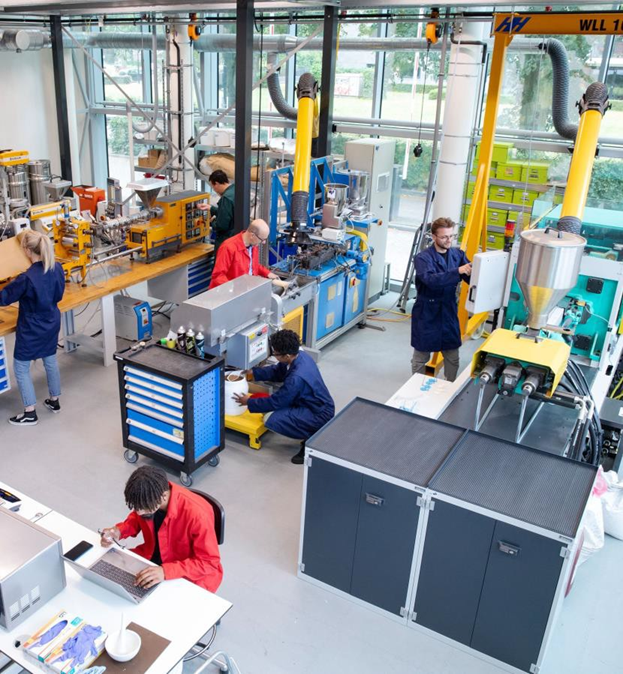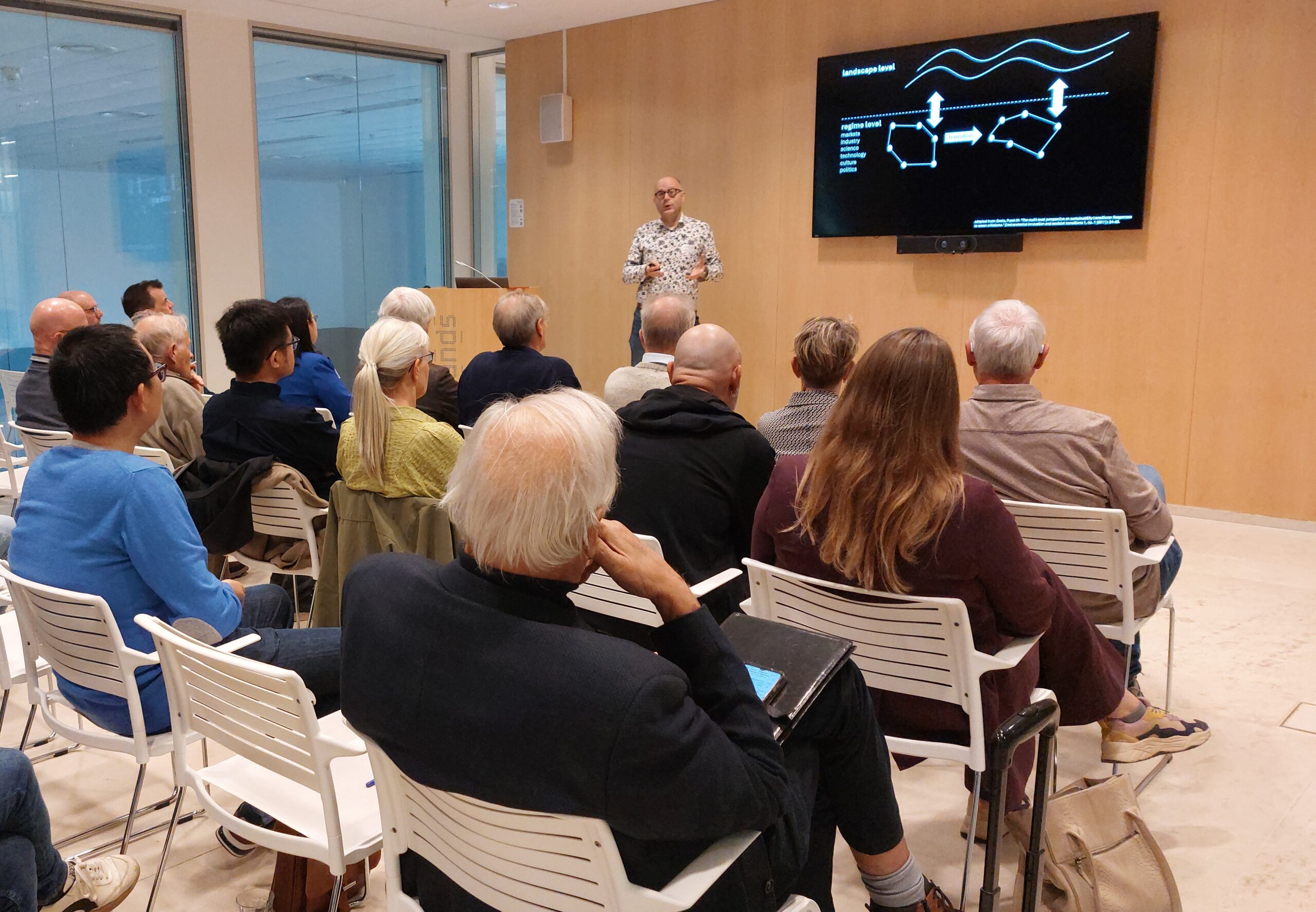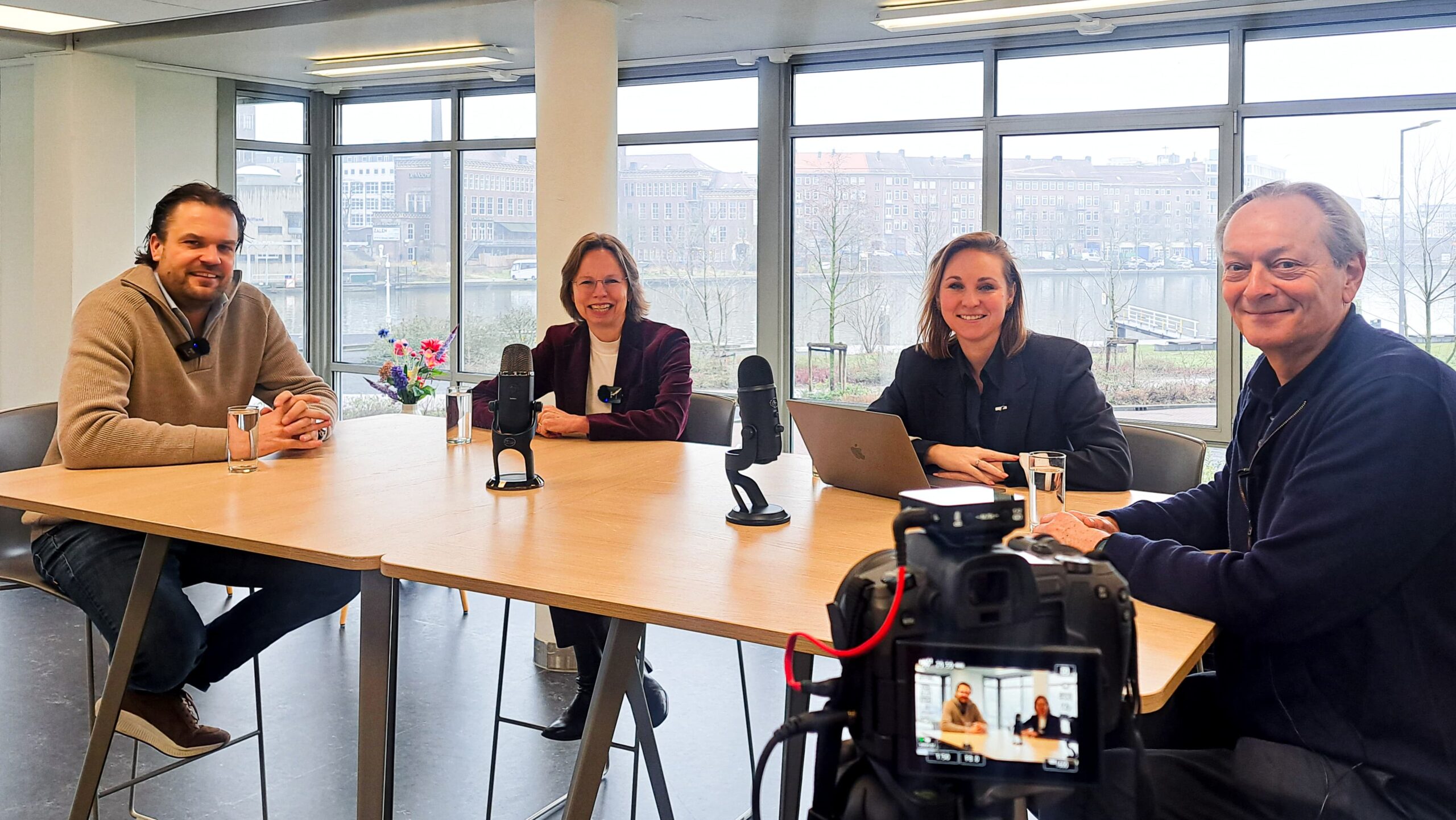Living Ecosystem is a SPRONG project in which Universities of Applied Sciences, entrepreneurs and governments work together on applied research into biobased and circular materials. The mutual connections are central. Rick and Werner are both active in the Plastics working group, in which Avans University of Applied Sciences and Rotterdam University of Applied Sciences work together on biobased alternatives to traditional plastics. What does this collaboration bring to entrepreneurs?
Praktijkgericht onderzoek: dichtbij en toepasbaar
Rick Hagenaars is R&D manager at Rodenburg Biopolymers, an innovative SME that develops bioplastics based on natural raw materials. “For us, applied research is indispensable. We do not have all the facilities and manpower to carry out large-scale research,” he says. “By working together with a University of Applied Sciences, we can carry out projects that we could not manage on our own. Students bring new ideas and help us look further than we could on our own.”
The collaboration delivers not only knowledge, but also talent. “Many students who do an internship or graduate at a company like Rodenburg Biopolymers later continue to work in the sector,” says Werner Müller, project leader at MNEXT/Avans University of Applied Sciences. “That is the strength of applied research: students learn in the real context and companies gain access to fresh insights and potential new colleagues. Together we develop knowledge that is directly applicable in practice.”
Mutual benefit
For both parties, collaboration is about more than a research result.
“We find it important to show students why biobased materials are important,” says Rick. “If they think about sustainability later in their careers, they will carry that forward. In this way, knowledge spreads naturally.”
Werner sees the same added value from the university’s perspective. “It is really an interaction. We bring theoretical knowledge and methodology, companies bring current issues and practical experience. That combination makes research stronger and more relevant, with more impact for the region and the sector.”
That does require trust and continuity, he emphasizes. “You don’t build a collaboration in three months. It takes time to get to know each other, to understand each other’s language and to discover where the added value lies.”
Living Ecosystem as a catalyst
Living Ecosystem has accelerated that process. The project focuses on accelerating the biobased transition by bringing education, research and industry closer together.
“In the beginning it was really a flying start,” says Rick. “Many parties participated, from large companies to small start-ups. Over time, mainly the parties who really believed in it remained, exactly the people you want to continue building with.”
For Rodenburg Biopolymers, the project was an opportunity to step outside the ‘bioplastic bubble’. “The world of bioplastics is small. Everyone knows each other. Through Living Ecosystem we were able to share our knowledge with people outside that circle and start new collaborations.”
Werner adds: “For us it was a way to gain better insight into what SMEs need. We learned how to better align our research infrastructure with companies so that they can really benefit from it.”
Concrete results
The collaboration has also led to concrete outcomes. Conversations within the project inspired new initiatives, such as research into fermentation processes and plans to share research facilities between universities and companies more effectively.
“That idea is simple but powerful,” says Werner. “Universities invest a lot in modern equipment and facilities. By sharing knowledge and making better use of each other’s labs, we can increase efficiency, save costs, and work more sustainably.”
Rick sees this as the real value of projects like Living Ecosystem. “It starts with awareness and trust. Once you have that foundation, you can make real progress — not only for your own company but for the entire sector.”
Moving forward together
Although the project is approaching its final phase, both Rick and Werner are confident that the collaboration will continue. “The connections we’ve made will remain,” says Rick. “I even gave guest lectures at Rotterdam University of Applied Sciences. That definitely left me wanting more.”
Werner nods: “In the end, it’s all about people. By working together, we all learn something new — and that’s exactly what drives the biobased transition forward.”
Living Ecosystem demonstrates that innovation happens where practice and knowledge meet. By working together on biobased solutions, companies and Universities of Applied Sciences are building not only new materials — but also a sustainable future.
Over Living Ecosystem
Read all about the SPRONG programme Living Ecosystem, who we are, what we stand for, and what we aim to achieve and have already accomplished. Click here: Living Ecosystem
|
Contact details Rodenburg Biopolymers |
Contact details Werner Müller klik op deze link Biopolymeer Applicatie Centrum |







